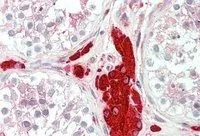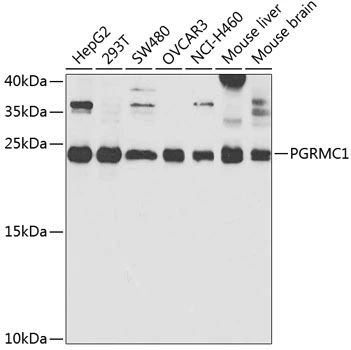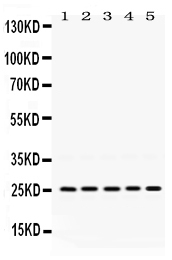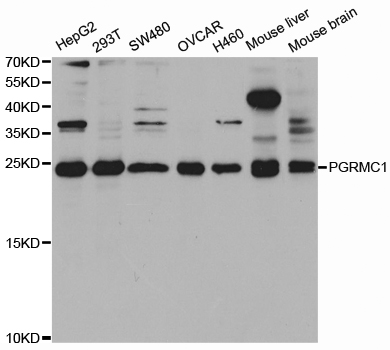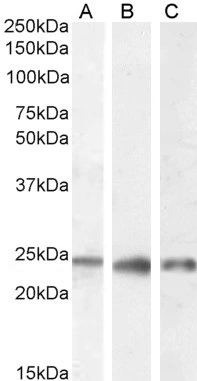
WB analysis of human kidney (A), liver (B) and testis (C) lysate (35microg protein in RIPA buffer) using GTX89362 PGRMC1 antibody, C-term. Dilution : 0.1microg/ml
PGRMC1 antibody, C-term
GTX89362
ApplicationsWestern Blot, ImmunoHistoChemistry, ImmunoHistoChemistry Paraffin
Product group Antibodies
TargetPGRMC1
Overview
- SupplierGeneTex
- Product NamePGRMC1 antibody, C-term
- Delivery Days Customer9
- Application Supplier NoteWB: 0.1-0.3microg/ml. IHC-P: 5microg/ml. *Optimal dilutions/concentrations should be determined by the researcher.Not tested in other applications.
- ApplicationsWestern Blot, ImmunoHistoChemistry, ImmunoHistoChemistry Paraffin
- CertificationResearch Use Only
- ClonalityPolyclonal
- Concentration0.50 mg/ml
- ConjugateUnconjugated
- Gene ID10857
- Target namePGRMC1
- Target descriptionprogesterone receptor membrane component 1
- Target synonymsDap1, HPR6.6, IZA, MPR, membrane-associated progesterone receptor component 1, progesterone binding protein
- HostGoat
- IsotypeIgG
- Protein IDO00264
- Protein NameMembrane-associated progesterone receptor component 1
- Scientific DescriptionThis gene encodes a putative membrane-associated progesterone steroid receptor. The protein is expressed predominantly in the liver and kidney. [provided by RefSeq, Mar 2010]
- Storage Instruction-20°C or -80°C,2°C to 8°C
- UNSPSC12352203
References
- Furuhata R, Kabe Y, Kanai A, et al. Progesterone receptor membrane associated component 1 enhances obesity progression in mice by facilitating lipid accumulation in adipocytes. Commun Biol. 2020,3(1):479. doi: 10.1038/s42003-020-01202-xRead this paper

